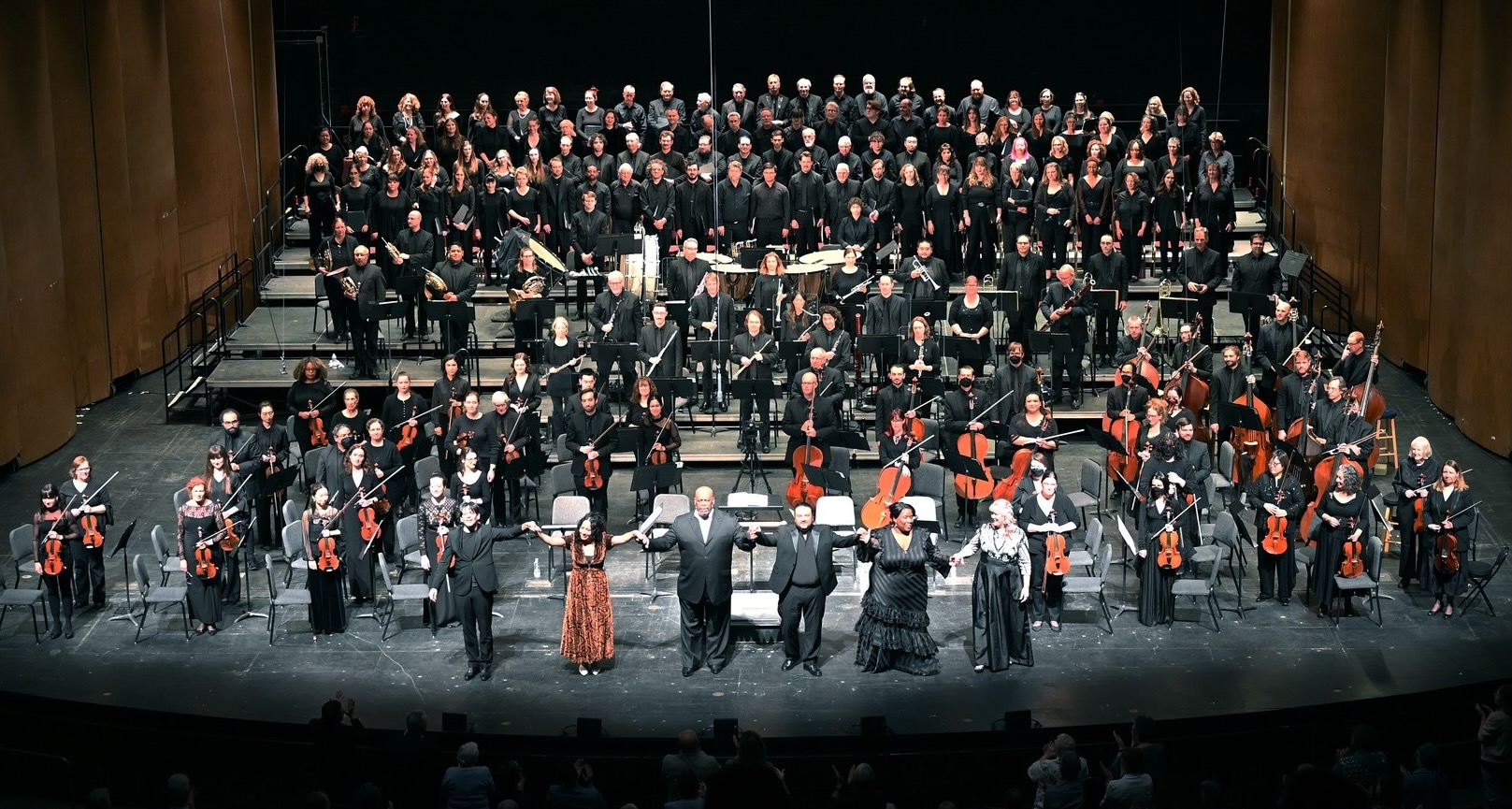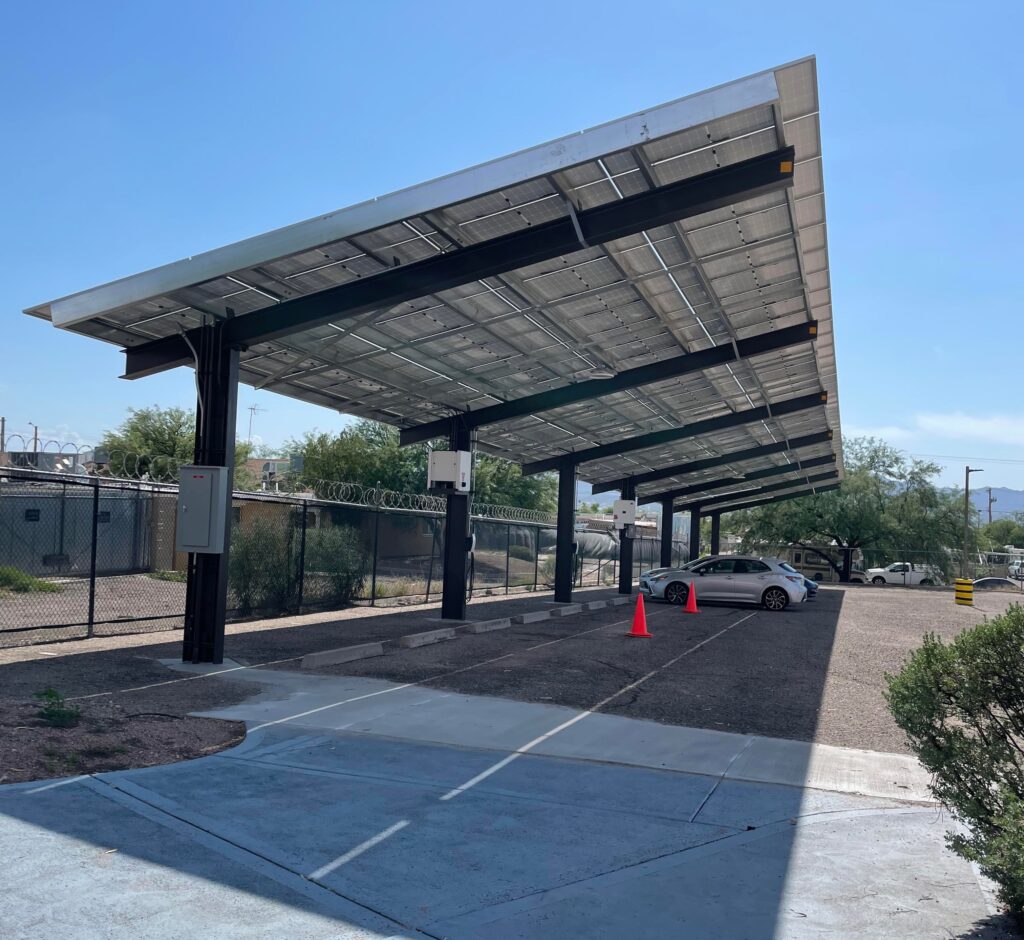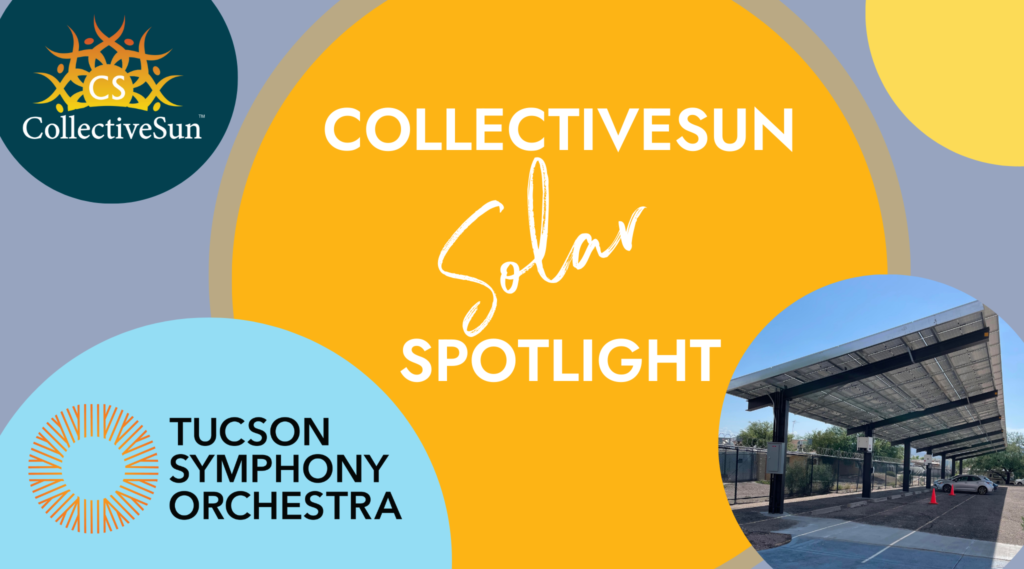Formed in 1928 as the first professional symphony orchestra in the Southwest, the Tucson Symphony Orchestra (TSO) is the longest continuously performing professional arts organization in Arizona.
Now, it also has the distinction of a brand-new solar carport, financed by CollectiveSun. We had a chance to talk with Paula Egan, VP of Finance at the TSO, to learn more about the organization and their solar project.

Serving the community with music and education
The mission of the Tucson Symphony Orchestra is to build and enrich the community through the experience of live music of the highest quality. The TSO provides a wide range of orchestral and educational programming to serve over 50,000 patrons and 20,000 students annually.
Egan notes that the arts industry was hit very hard by Covid, and the government support that was available to help has now run out. “Our biggest urgency is to rebuild our audiences,” she says, “and rebuild them with different audiences than have traditionally been a part of symphony concerts. So we’re diversifying our programming to be as relevant as possible to our community.”

That includes the Hispanic community, which has a major presence in southern Arizona. The TSO has expanded their community events to include a National Mexican Independence Day program.
To reach all community members, the orchestra puts on an annual free concert that provides a sampling of the symphony’s season. Diversified programming includes playing music live to movies like Frozen and Star Wars. “Because our programming is now so diverse, we welcome all audiences to come check out the symphony,” says Egan. “There’s something for everyone.”
At a time when music education in schools is on the decline, the TSO has been very involved with local schools. “The work that our musicians do when they go to those schools and interact with 20,000 students a year really inspires the next generation to have a love of music,” says Egan.
Going solar
While the TSO holds its large orchestral productions at the Linda Ronstadt Music Hall, they also host chamber concerts, rehearsals, and free “Just for Kids” events at the Tucson Symphony Center located in Tucson’s Sugar Hill neighborhood.
The TSO has owned the center since 1996, and the electricity bills for that facility have historically made up over 25% of the center’s operating costs. CollectiveSun’s unique assistance to nonprofits made investing in solar a smart financial decision for the TSO, with an installation that is expected to offset the center’s utility bill.
“Our new 86kW solar parking structure will be able to generate enough energy to provide over $600k in savings over the next 25 years,” says Egan. “These savings will help TSO to continue serving the Southern Arizona community with live orchestral music.”
To make their concerts more accessible to all, the TSO has lowered ticket prices. The solar savings will help keep ticket prices lower in addition to supporting the orchestra’s programs.
The Path to Solar

Egan has been with the TSO for three years. “I knew when I got here and saw our electricity bills that solar was the answer,” she says. But it took some time to find a solution that worked for the organization.
When the TSO was not chosen for a local grant for nonprofit solar installation, solar seemed out of reach. That changed with the passage of the Inflation Reduction Act, which made solar more accessible to nonprofits.
So Egan began looking for financing options that would allow the TSO to invest in solar. With skyrocketing interest rates, this was a challenge. But Egan knew she’d found the right fit for the organization when she located CollectiveSun through a Google search.
“The whole process of working with CollectiveSun was so simple,” says Egan. She adds that CollectiveSun’s transparency, combined with the ease of working with solar installer Technicians for Sustainability, made it easy for the organization’s finance committee to approve moving forward with the project.
The Inflation Reduction Act makes investing in solar a smart financial decision for nonprofits. However, when the TSO embarked on their project in early 2023 there were still a number of unknowns about the new legislation that are now better understood. “Going forward, nonprofits will have a lot more track record and history about how the legislation works, and any nonprofit interested in going solar now will have an easier time,” says Egan. TSO’s trailblazing efforts are helping to light that path for other nonprofits.
Solar and Beyond
In addition to being culturally relevant to its community, the TSO also aims to be a good environmental steward. Being in southern Arizona makes the organization very aware of how critical the environment is. “We’re taking a holistic approach to being stewards to our environment. In addition to the solar, we’re also putting in water-harvesting landscaping, and I’m working on an Arizona Green Business Certification for the organization. Installing solar is a big step on the path for TSO to obtain the certification,” says Egan.
Even before going solar, the TSO replaced all their lightbulbs with LEDs, aided by local rebates. They also conducted a water assessment and made other energy-efficiency updates.
“It is amazing how many green projects are very practical financially for organizations,” says Egan. “For TSO, going green is part of building relevance to the Southern Arizona community by being good stewards of our environment.”
Learn More
To learn more about the Tucson Symphony Orchestra, visit www.tucsonsymphony.org or contact them at 520-882-8585.
To learn more about the Inflation Reduction Act, see CollectiveSun’s Direct Pay updates and our free courses on HeatSpring. If you have questions about how the legislation might affect your nonprofit’s solar plans, don’t hesitate to contact us.
This loan was made possible by the generous participation of the BQuest Foundation. Click here for more information about the SunForAll program.
